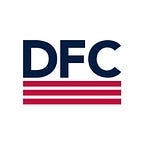In a recent visit to the Philippines, Vice President Kamala Harris spoke of the returns generated by investing in women. “You lift up the economic status of a woman, her family will be lifted, her community will be lifted… Lift up the economic status of women, and all of society benefits,” she said. The multiplier effect of investing in women is well-established and underscores why DFC’s 2X Women’s Initiative is a key part of the agency’s work with the private sector to advance global development.
Women are significantly under-funded as business owners and face more challenges accessing paid work and rising to senior management positions, especially in the wake of the COVID-19 pandemic. The International Finance Corporation has estimated that a $300 billion gap in financing exists worldwide for women-owned small businesses, and more than 70 percent of women-owned small and medium enterprises have inadequate or no access to financial services. While female entrepreneurship is increasing in developing nations, many businesses are relegated to the informal sector.
Investments in women have extraordinary impacts. Women reinvest a large share of their income back into their families and communities, including through the purchase of goods and services from education to housing and healthcare. Empowering women entrepreneurs boosts economic growth and creates jobs, and is especially important for the poorest 40 percent of the world’s population. Gender equality has also been found to be the best predictor of a country’s overall stability and prosperity; a country with a wider gender gap is more likely to be involved in a violent conflict.
The Orange Bond Principles
DFC recently joined other international partners to write a set of guidelines and principles for a new tool to help the world invest in women: the Orange Bond.
Bonds have long been a basic financial tool, but increasingly they are being used more strategically to advance development. More than a decade ago, Green Bonds were introduced to mobilize capital for environmentally sound and sustainable projects. Since then, Green Bonds have mobilized over $2.0 trillion to support climate and environmental projects, and other socially conscious bonds have been created to replicate their success.
Building on this model, Orange Bonds — named after the color of Sustainable Development Goal 5: Gender Equality — represent a new asset class designed to “build a gender-empowered financial system that embraces inclusion by valuing the full and meaningful participation of women, girls, and the LGBTQI+ community regardless of race, religion, region, income, or other intersectional factors.” The Orange Bond Initiative™, led by DFC partner Impact Investment Exchange (IIX), aims to empower 100 million women and girls worldwide by unlocking $10 billion in capital by 2030. As a member of the Orange Bond Initiative Steering Committee, DFC worked with other sustainable investing institutions — including the Australian Department of Foreign Affairs and Trade (DFAT), the United Nations Capital Development Fund (UNCDF), Water.org, the Australia and New Zealand Banking Group (ANZ), Shearman & Sterling, and Nuveen — to create a guiding document that will bolster both the impact and sustainability of the Orange Bond asset class.
Released in October 2022, the Orange Bond Principles support issuers, investors, arrangers, and certifiers in mobilizing capital via Orange Bond issuances by establishing Orange Bond financing criteria. Orange Bond capital must go to projects and enterprises that substantially benefit women or gender minorities, ensure a gender equitable workforce and/or inclusive value chains, or are majority women-owned or led. Issuers of the bonds must maintain substantial gender diversity in their leadership team or the team working on the bond. The Principles also require continued transparency in the investment process and impact reporting.
While writing the Orange Bond Principles, the Steering Committee solicited feedback from over 100 participants from groups typically underrepresented in financial markets and in the gender-lens investing narrative, including voices from developing countries. The contributions of these voices underscore the Orange Bond Initiative’s commitment to transparency and inclusion.
DFC’s Investments in Women
Five years ago, DFC (then OPIC) launched its 2X Women’s Initiative to mobilize investment to help women in emerging markets access critical services from clean water to small business loans and advance as entrepreneurs and business leaders. Since then, DFC has catalyzed billions to projects that are owned by women, led by women, or provide a product or service that empowers women. DFC financing has enabled India-based Soothe Healthcare to expand access to women’s hygiene products and health literacy. In Jordan, DFC’s first development impact bond focused on refugees is financing a training and grant program to help refugees and vulnerable Jordanians — primarily women and youth — launch microenterprises as sustainable sources of household income.
Now, DFC is helping to pave the way for Orange Bond financing. A DFC loan to the Women’s Catalyst Fund is soon expected to provide first loss capital into IIX’s latest issuance under their Women’s Livelihood Bond (WLB) Series™, WLB5 — launching the world’s first Orange Bond. The WLB Series supports lending to financial intermediaries and impact enterprises benefiting women, girls, and underserved communities across Asia and Africa. IIX used DFC guaranties to issue the first four WLBs starting in 2017. The first WLB reached maturity in 2021, repaying all investors in full.
